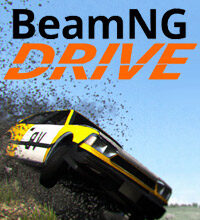
BeamNG.drive
Popular Now

BeamNG.drive is a popular open-world driving simulation game known for its incredibly realistic vehicle damage physics. Unlike traditional racing games, BeamNG.drive doesn’t just show superficial car damage, but rather simulates the intricacies of how vehicles deform, break, and react to different forces. This makes the game stand out in a genre that often compromises realism for speed or action. However, despite its innovative approach, BeamNG.drive has faced various issues related to vehicle damage simulation that have affected its overall gameplay experience. In this article, we’ll delve deeply into one such problem: the inconsistency and unrealistic behavior of vehicle damage in certain scenarios. We’ll explore how it affects gameplay, community feedback, and what the developers are doing to fix it.
The Core of BeamNG.drive’s Damage Model
The Science Behind the Damage System
At its heart, BeamNG.drive uses a soft-body physics engine, which allows for detailed and complex deformation of vehicles. This is achieved by breaking the car down into thousands of individual parts and simulating their behavior under various conditions, such as collisions, impacts, and even gradual stress over time. This is a far cry from the rigid body physics used in many other games, which merely apply superficial damage.
The physics engine uses elements of elasticity, plasticity, and strength to determine how a vehicle should respond when subjected to different forces. For example, when a car crashes into a wall, the engine calculates how the chassis bends, how the tires burst, and how the vehicle’s weight distribution affects the overall damage.
Complexity and Realism of Vehicle Deformation
BeamNG.drive prides itself on the complexity of its vehicle damage system. Each vehicle in the game is built using a combination of rigid body structures and flexible components that work in tandem to simulate realistic crashes. However, the game doesn’t always get this right in every scenario. Certain high-impact collisions can produce inconsistent results in terms of how the car deforms, leading to discrepancies between what the physics engine simulates and what would happen in real life.
Early Issues: The Unrealistic Damage in Minor Collisions
Minor Collisions and Over-Exaggerated Damage
When BeamNG.drive was initially released, many players observed that even minor collisions caused disproportionate damage to vehicles. A simple fender bender, for example, could result in extensive damage to the car’s engine bay or rear axle. Many vehicles appeared to crumple or suffer from “jelly-like” physics, which detracted from the immersion of the game.
Impact on Gameplay Experience
While BeamNG.drive’s damage system was revolutionary for its time, these early issues made the game less enjoyable for players looking for a more grounded and realistic experience. Many players were frustrated by the fact that their vehicle would fail in minor accidents that wouldn’t realistically cause the same level of damage. Players quickly found that their enjoyment of the game wasn’t just about crashing cars, but also about the sense of realism in the way those cars behaved after the crash.
The Fix: Early Patches and Updates
Improving the Damage Thresholds
The developers at BeamNG.drive took note of community feedback and began addressing the unrealistic damage models. One of the major changes involved tweaking the damage thresholds, or the amount of force needed to trigger significant deformation in a vehicle. This helped mitigate issues where cars would bend or break under minor impacts.
The damage thresholds were adjusted based on vehicle type, allowing for a more tailored approach to how different cars reacted to crashes. Lighter cars like sports cars or sedans would now suffer more from a minor impact, while heavier vehicles such as trucks or SUVs would require more significant force to show noticeable damage.
Enhancing Realism Through Updates
Over time, the game received several patches that aimed to enhance the physics engine’s ability to accurately simulate real-world damage. These patches improved how different materials reacted to stress, and the visual representation of damage became more consistent with the forces involved in each crash. Vehicles no longer crumpled in strange or unrealistic ways, and damage models were more predictable.
The Role of Vehicle Customization and Modding

The Power of the Modding Community
BeamNG.drive has one of the most active and passionate modding communities in the gaming world. Players have access to a wide range of mods that include new vehicles, maps, and even entirely new physics models.
Modding’s Effect on the Damage Model
While modding has added a wealth of content to the game, it has also highlighted some of the remaining inconsistencies in the damage system. Certain mods have shown that BeamNG.drive’s damage model struggles when dealing with highly complex vehicle designs, such as cars with unrealistic geometry or custom parts. These vehicles often behave unpredictably when involved in collisions, leading to bizarre damage results that are not representative of real-world physics.
This issue has led to further discussions within the community about the limitations of the engine and whether the developers should take modding feedback into account when refining the damage model in future updates.
High-Speed Crashes: Realism or Exaggeration?
Speed and Force: An Inconsistent Relationship
One of the most exciting aspects of BeamNG.drive is the ability to simulate high-speed crashes. Players can drive at breakneck speeds, slamming into walls or other vehicles at velocities that would result in catastrophic damage in real life. However, many players have reported that high-speed crashes often result in unrealistic outcomes.
At times, the game over-exaggerates the damage caused by high-speed crashes, causing vehicles to break apart in ways that don’t match real-world physics. The vehicles might explode in spectacular fashion, but this doesn’t always align with the amount of force applied. In some cases, crashes at moderate speeds appear to cause just as much, if not more, damage than those at much higher speeds.
The Balancing Act: Realism vs. Fun
This creates a dilemma for the developers: how can they balance realism with the need for fun? While realistic car destruction is a major draw for BeamNG.drive, excessive damage in high-speed scenarios can feel over the top and take away from the immersion. Players are left questioning whether the game is trying too hard to replicate real-life crashes or if it is simply exaggerating for spectacle.
Player Feedback and Community Impact
The Importance of Community Reviews
Player feedback has been critical in shaping BeamNG.drive’s development over the years. The community’s attention to detail and focus on realism has helped highlight the flaws in the vehicle damage system, prompting the developers to prioritize improvements. Players often post videos of crashes, detailing how the damage system performs in different scenarios, and this feedback has played a crucial role in identifying areas that need attention.
The Ongoing Debate: Perfecting the Damage System
The discussion around the game’s damage model remains ongoing. Many players feel that BeamNG.drive has made significant strides in improving the system, but there is still room for improvement. The balance between realism and gameplay is a fine one, and while the game’s physics engine is impressive, it often comes up short when it comes to high-speed crashes and vehicle customization.
The Future of Vehicle Damage in BeamNG.drive
New Physics Engine Developments
The developers at BeamNG.drive are always working on improving the game, with frequent updates that enhance the overall experience. One area that continues to see significant improvements is the vehicle damage model.
Anticipating Future Fixes
The community is eagerly awaiting future updates that will address the current issues with damage models, especially when it comes to high-speed crashes and vehicle mods. Some speculations point toward an overhaul of the damage engine, which could lead to more consistent results across various scenarios.
Conclusion

BeamNG.drive has set the standard for realistic vehicle damage simulation in video games. While the game’s damage system is groundbreaking, it still faces challenges, particularly in terms of inconsistency and unrealistic damage in certain crash scenarios. The modding community has highlighted these issues, and the developers continue to refine the physics engine in an attempt to make every collision as realistic as possible. As BeamNG.drive evolves, it’s clear that the damage system will remain a central focus, with future updates aimed at ironing out inconsistencies and delivering a truly immersive driving experience.


















